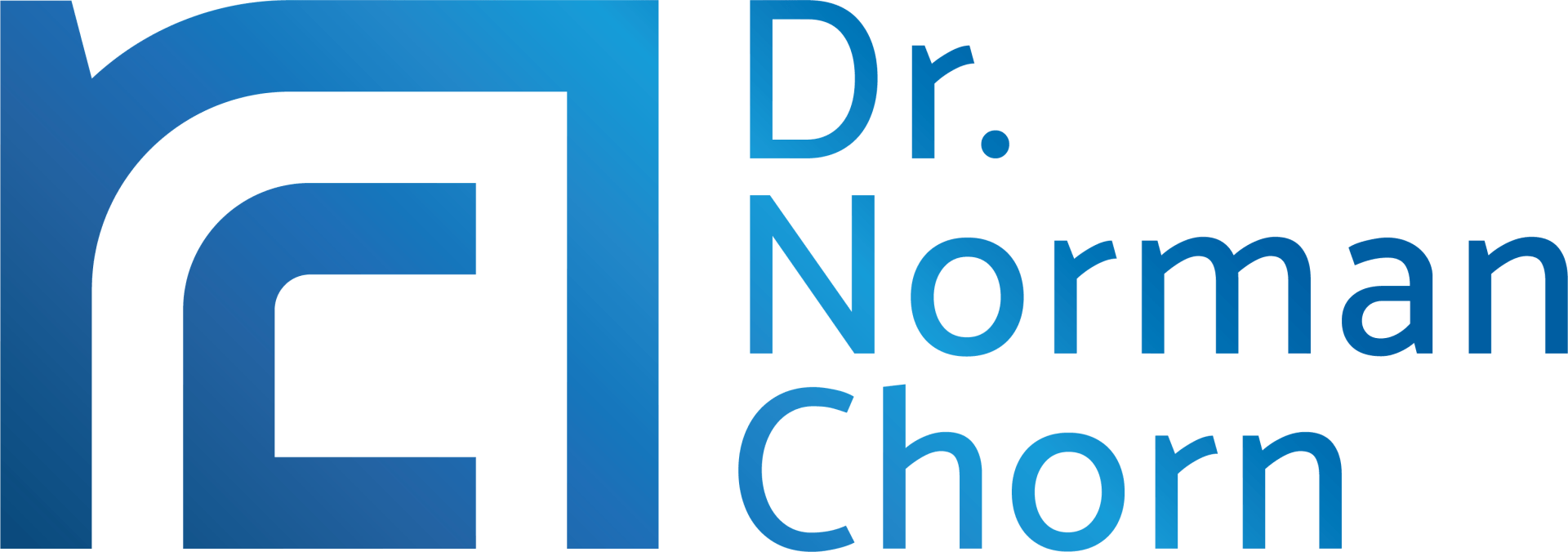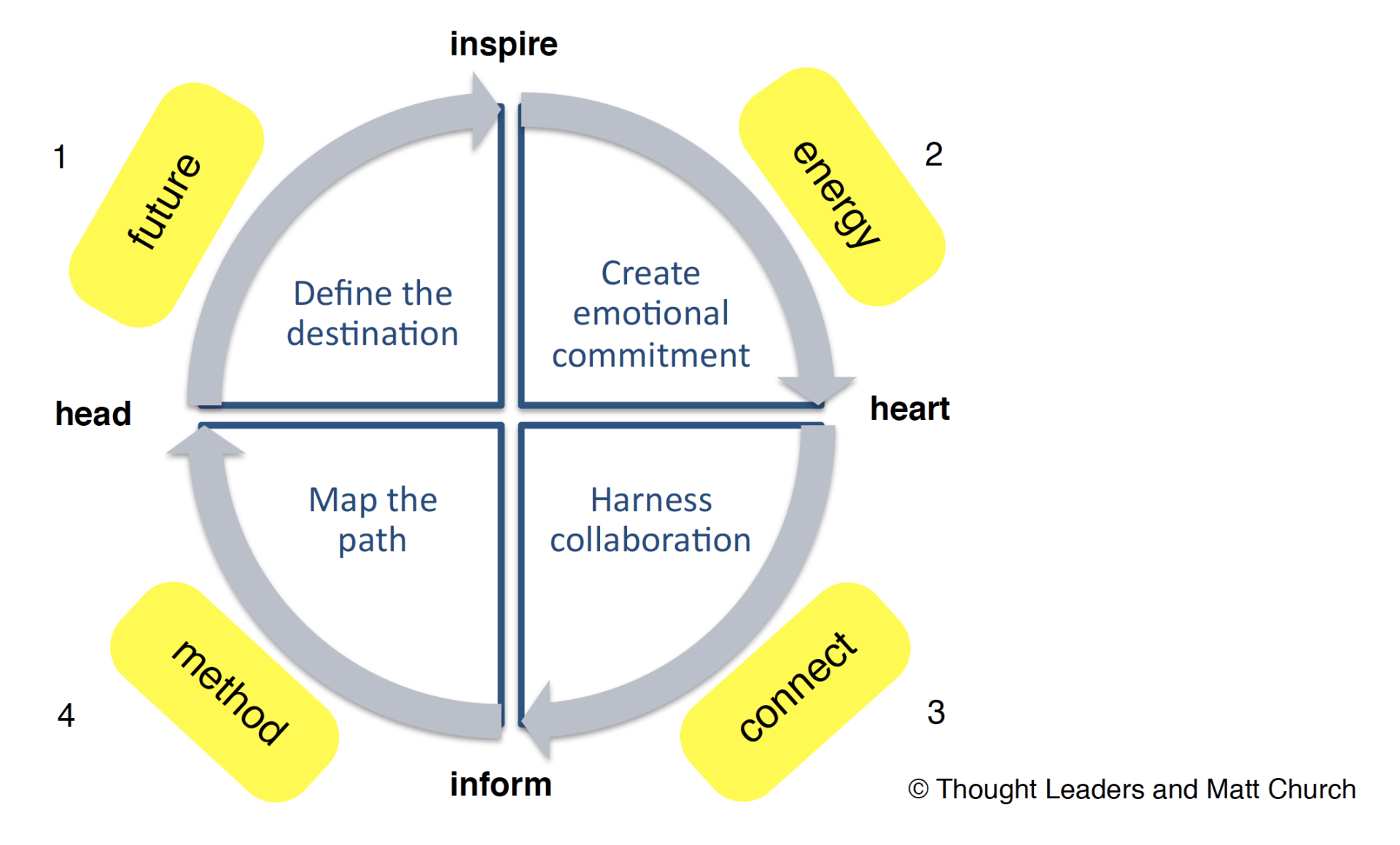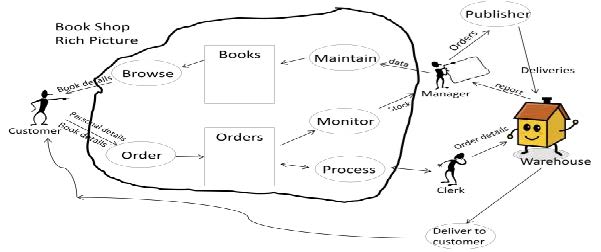AN ARTIFICIAL DISTINCTION?
I’ve become increasingly concerned by comments that suggest that organisations should focus on the quality of their execution rather than their strategy), since this will offer them greater leverage and returns. The implication is that strategy and execution are separate activities within the organisation and we should place more focus on one rather than the other. This is an artificial distinction, and leads to several other misleading conclusions, such as:
• we can divide the organisation into ‘thinkers’ and ‘doers’ - with the ‘thinkers’ usually found in leadership positions
• moving from strategy to execution is a linear process - the one takes over when the other has finished
• strategy can be executed in a ‘top-down’ process - handed down by the leaders to the rest of the organisation.
These are invalid conclusions when considering complex, knowledge-based organisations. These organisations are usually referred to as complex adaptive systems1 and behave quite differently from simpler, traditional organisations. This difference has contributed significantly to the high failure rate experienced by organisations in the implementation of their strategy - particularly when this emphasises a shift in direction or style2.
The key reasons for the high failure rate include:
• staff are disengaged and uncommitted to strategy when it is presented to them as a fait accompli
• separating thinking and doing significantly inhibits the organisation's ability to respond
and adapt to uncertain and rapidly changing conditions
• top-down approaches are usually met with fear and resistance in our modern
knowledge-based organisations.
DESIGN THINKING CAN BRIDGE THE ‘DIVIDE’
How can we bridge this artificial ‘divide’ between strategy and execution? It is clear that this distinction does not serve us well in complex organisations - and is closely linked with many of the strategy failures we experience.
‘Design thinking’ offers some useful insights as to how we might bridge this gap - and calls for us to re-think the true meaning of strategy. From the mainstream of strategy thinking, Richard Rumelt3 offers a key insight when his research-based argument suggests that ‘good’ strategy is an integrated view of:
• the diagnosis of a situation
• the guiding philosophy that addresses the challenge in this situation
• a coherent plan of action to enact the philosophy.
Importantly, he argues that these three elements are inseparable for successful strategy. In other words, we cannot simply concentrate on the plan of action without close attention to the diagnosis and guiding philosophy. ‘Design thinking’ is all about this integration. It emphasises a number of key characteristics in the way we solve problems or address challenges in organisations4. These include:
• the need to be human-centric
• a bias to adaptivity
• systems thinking
• big picture / generalist thinking
• using diagrams and models to create pictures of the situation and solution.
So, how can we use these perspectives from design thinking to bridge the gap between strategy and execution in our modern, complex organisations? I suggest five key principles and actions below.
DESIGN THINKING CAN BRIDGE THE ‘DIVIDE’
Design-based strategy may be characterised by five key principles as follows:
1. A focus on purpose and broad boundaries
Strategy should be guided by an overall purpose and clear boundaries, but it is important to avoid setting tight objectives at the outset. An important distinction can be made between design-based strategy and planning. Planning assumes a high level of certainty and understanding of the situation. Based on this, conventional planning makes a set of assumptions at the outset (these are, in effect, predictions about the future) and then outlines a set of objectives to be achieved. Design-based strategy, on the other hand, embraces the uncertainty and assumes the need for observation and learning as the organisation embarks upon the strategy journey. Accordingly, the objectives are allowed to emerge along the way as the conditions and requirements become clear. Key guidance is provided by the overall purpose and boundaries, rather than by the detailed project plan. This presents a significant challenge for organisations who are accustomed to having a watertight plan with milestones and KPIs before any resources are committed. However, the use of watertight planning is fraught with danger and high failure rates in conditions of uncertainty and rapid change. Instead, design-based strategy allows for understanding and insight to emerge along the way - and objectives are then set as this understanding emerges.
2. Hold processes ‘lightly’
In a conventional planning regimes, processes are held tightly. Little deviation is allowed with respect to deadlines, the approach, and the metrics used to track progress. In a design-based approach, on the other hand, processes are held ‘lightly’. As Duck argues, holding lightly means that you allow the plan to change regularly in the light of fresh information and insight. Conventional planning pushes to make decisions so that these can be locked in and the project moved along. Design-based strategy is not about delaying the decisions, it’s about questioning and testing - doing the work to make sure the decisions are optimal for achieving the overall purpose. Duck points out that the challenge is to form a point of view as soon as possible, but then to lock it in as late as possible.
3. Recognise strategy as a continuous cycle
The third characteristic of design-based strategy is that it is continuous in nature. Tim Brown, a thought leader in the design thinking space , suggests that it is a continuous cycle. This is well demonstrated by the strategy cycle as depicted by Church et al
Conventional planning would move round the cycle once and then remain fixed on the mapping of the path - traditional ‘execution’. Design-based strategy, on the other hand, keeps cycling around and engages both the rational and emotional aspects of the strategy. It permits, indeeds encourages, a continuous questioning of the destination and pathway to achieve the overall purpose of the strategy. As mentioned earlier, the learning process allows a rethink of the process as new information and insights emerge.
4. Move towards collaboration
In the planning model, there is a tendency for the ‘thinkers’ to play the role of ‘experts’. The lessons from complex organisations suggest that the expert model seldom produces the best outcomes as there is rarely ‘one best way’9. In addition, attempting to ‘sell‘ a strategy from the experts is often met with fierce resistance and fear from a change-weary workforce. Instead, an appropriate approach seems to be collaboration, where we involve staff and key stakeholders in the different stages of the strategy cycle. Not only do we get the engagement that comes from participation and involvement, we also get a rich diversity of views and insights - key ingredients for innovative strategy. Key to this approach is the ‘pull - don’t push’ philosophy. Rather than seeking to prove you’re right and attempting to push through when encountering resistance, it seems best to draw dissenters towards you and encourage them to participate in finding an optimum solution. Pushing your viewpoint often galvanises resistance, whereas an approach that engages the key influencers will avoid a contest to ‘gain control’. 5. Develop rich pictures The fifth element of design-based strategy is to move beyond the use of project control sheets and action plans to manage progress. ‘Rich pictures’ are diagrams and pictures that show the relationships between the key players, processes and information that are relevant in addressing the challenge or solving the problem facing the organisation. The rich picture below is an example of a bookstore seeking to improve the performance of its supply chain in meeting customer demands. Note that the way this challenge is represented moves beyond data and facts - it outlines a series of elements:
• the key players in the challenge
• the processes and functions they perform
• the data that is available for decision-making
• the relationships that exist between the various elements
• any boundary that we wish to place on the scope of the ultimate solution.
The use of ‘rich pictures’ promotes the continuous cycle of design-based planning, in that it allows us to cycle from the future destination ➙ commitment ➙ collaboration ➙ mapping the path ➙ future destination, and so on. ‘Rich pictures’ also demonstrate the big picture in a way that is more accessible to our intuitive consciousness. In other words, it is more likely to evoke innovative and creative responses to complex challenges.
CLOSING THE DIVIDE
Design-based strategy is not the panacea to improving performance in a complex and changing environment. As mentioned before, there is seldom ‘one best way’. However, what it does demonstrate is that the distinction often made between strategy and execution may not be valid. In reality, it isn’t about bridging the gap between the two - it’s more about closing the ‘divide’ in our thinking and the way we conceive of strategy. I firmly believe we are on the cusp of some significant shifts in the way that enterprises think about and use strategy to improve their performance. The shift in the management consultancy space away from pure ‘advisory’ services towards an offering that integrates the ‘thinking’ and ‘doing’ is testimony to that shift. And a key to this is the understanding that design thinking brings to the practice of both strategy and leadership in our modern organisations.
Dr Norman Chorn is a strategist and organisation development consultant within the BrainLink Group.
He works with executives and organisations to develop future strategy and organisational capability.
His particular areas of focus are:
‣ strategy in conditions of uncertainty
‣ organisational and cultural alignment
‣ strategic leadership.
Subscribe to our regular articles, insights and thought leadership







